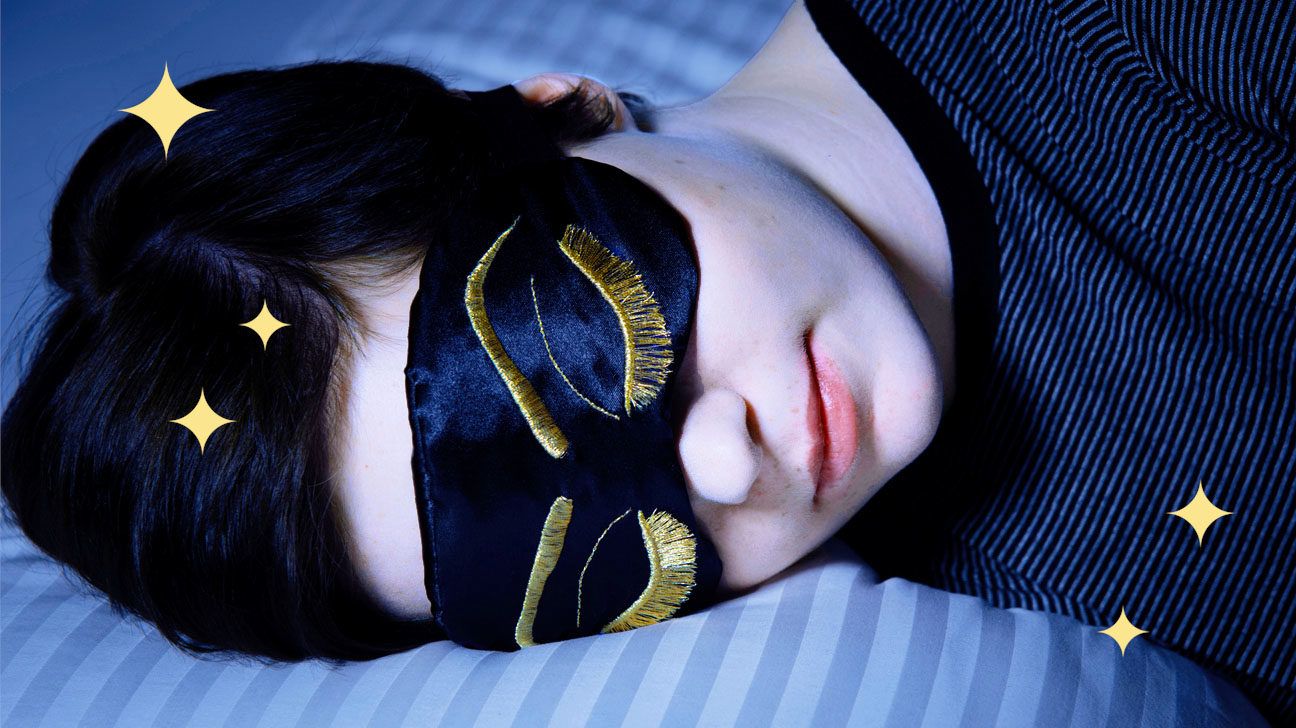We include products we think are useful for our readers. If you buy through links on this page, we may earn a small commission. Here’s our process.
Greatist only shows you brands and products that we stand behind.
Our team thoroughly researches and evaluates the recommendations we make on our site. To establish that the product manufacturers addressed safety and efficacy standards, we:- Evaluate ingredients and composition: Do they have the potential to cause harm?
- Fact-check all health claims: Do they align with the current body of scientific evidence?
- Assess the brand: Does it operate with integrity and adhere to industry best practices?
As an autistic person, I am especially sensitive to sensory input. I notice every tiny sound, every sliver of light, every bunching of fabric as I toss and turn in bed.
Maybe you’ve tried wearing earplugs or hanging blackout curtains in your room. Maybe you’ve just resigned yourself to suffering your way to sleep each night, as I did. For light sleepers — both autistic and allistic (non-autistic) — sensory sensitivity is a pain.
Then, last year, while living in sublet rooms and hostels in Mexico, I came up with a portable sleep solution that addressed my sensory needs around noise, light, and touch. This, along with my established routine, helps take focus off of the stressors of the day and cues my body to sleep.
Of course, I’ve tried sleeping with earplugs and turning a box fan on high, but neither method blocked sound well enough for my sensitive ears. So now I fall asleep wearing in-ear headphones — I use MiniSo ($25), which are comfortable enough to wear in bed — and listening to a free app called Brain Wave Therapy.
You choose a type of repetitive binaural wave (the app has suggestions for what each frequency is suited for) and a duration. It works better than trying to fall asleep to music. Not only does it block noise, but the sound itself is soothing: just hearing it begins to lull me to sleep.
For my light sensitivity problem, which can also trigger migraines during the day, I use an eye mask from Alaska Bear ($10) that has a nose baffle and two straps. I’ve found two straps help keep the mask secure and better molded to my face.
If light isn’t your problem, maybe you haven’t thought about touch — the feeling, weight, or material of my bedsheets or clothes can keep me awake.
Wearing loose pajamas was irritating because they bunched up when I moved. Now I wear cotton leggings that stay put when I turn or fidget and a cami tank top or a fitted shirt, depending on the weather.
I’m in bed each night by 9 or 10 p.m., and then, for anywhere from 10 minutes to… sometimes way too long, I settle in with a novel. Escaping into a fictional world gives me distance from the anxieties I might have about the day that just ended or the day to come.
Once I set my alarm for the next morning and turn on Brain Wave, I don’t check my phone — I just read until I’m sleepy.
Whether I’m trying to sleep or I’m uncomfortable during the day, I’ve found that asking myself to identify the sensory triggers helped me figure out how to accommodate them. Now I’m regularly getting restful sleep for the first time in my life.
But most importantly, I’ve found that these sensory adaptations don’t have to be limited to nighttime. I use the Brain Wave app any time I feel myself entering sensory overload or when I need to focus. When I feel a migraine coming on, I put on my eye mask too.
MiniSo In-Ear Headphones
Get it via Amazon ($25)
ALASKA BEAR® Natural Silk Sleep Mask
Get it via Amazon ($10)
Brain Wave Therapy (Binaural)
Get it via Google Play
F21 Classic Cotton-Blend Leggings
Get it via Forever 21 ($4)
F21 Basic Cotton-Blend Cami
Get it via Forever 21 ($3)
Kinga Obartuch is a queer autistic writer who loves pierogi and always has dirt under her fingernails. Find her on Instagram, Twitter, and her website.

